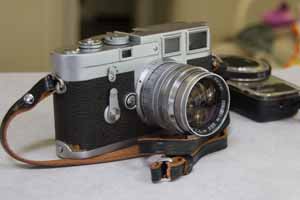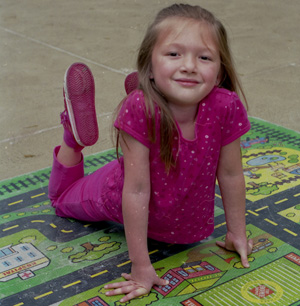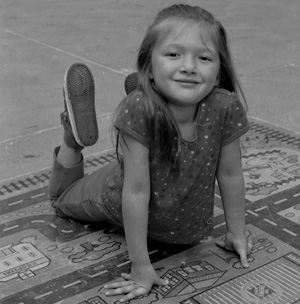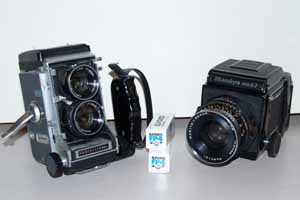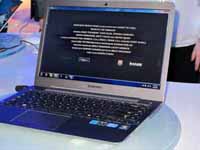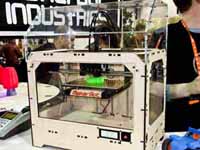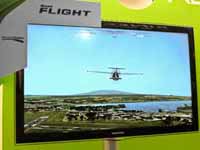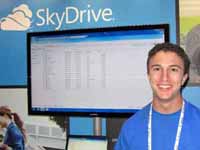Online Magazine
Recent Posts
- Safeguard your Cellphone Photos
- Black & White to Color – Instantly
- Wearing Many Hats
- Video Roundup
- Rescuing Your Blurry Pictures
- Showing Their Age
- What is Your Angle?
- Panorama Photos
- Humorous Photos
- Close Ups
- Fisheye Pictures
- Photo Antiquities
- Printing Big
- Appreciating Scale
- Celebrity Sightings
Tags
More Places to Go
- Free "How-To" Books “How To” books for popular cameras 0
- Vist Us on Facebook keep in touch with us on Facebook 2
Archives
- July 2023 (1)
- March 2023 (2)
- February 2023 (1)
- December 2022 (1)
- October 2022 (1)
- September 2022 (8)
- August 2022 (9)
- July 2022 (1)
- June 2022 (1)
- June 2021 (1)
- May 2021 (1)
- March 2021 (5)
- February 2021 (4)
- January 2021 (2)
- April 2019 (1)
- March 2019 (1)
- February 2019 (1)
- October 2018 (2)
- April 2018 (1)
- March 2018 (4)
- February 2018 (1)
- November 2017 (1)
- August 2017 (1)
- June 2017 (1)
- April 2017 (1)
- March 2017 (5)
- February 2017 (2)
- January 2017 (1)
- October 2016 (1)
- September 2016 (1)
- August 2016 (1)
- July 2016 (1)
- May 2016 (1)
- April 2016 (1)
- March 2016 (2)
- February 2016 (1)
- January 2016 (2)
- December 2015 (1)
- November 2015 (1)
- October 2015 (3)
- April 2015 (1)
- March 2015 (5)
- February 2015 (1)
- January 2015 (4)
- December 2014 (2)
- November 2014 (5)
- October 2014 (2)
- September 2014 (1)
- August 2014 (2)
- July 2014 (1)
- May 2014 (1)
- April 2014 (5)
- March 2014 (5)
- December 2013 (2)
- November 2013 (18)
- October 2013 (1)
- September 2013 (1)
- August 2013 (1)
- July 2013 (1)
- June 2013 (3)
- May 2013 (1)
- April 2013 (2)
- March 2013 (1)
- February 2013 (1)
- January 2013 (1)
- December 2012 (1)
- November 2012 (2)
- October 2012 (2)
- September 2012 (5)
- August 2012 (2)
- July 2012 (1)
- June 2012 (1)
- May 2012 (1)
- April 2012 (4)
- March 2012 (1)
- February 2012 (1)
- January 2012 (3)
- December 2011 (1)
- November 2011 (3)
- October 2011 (1)
- September 2011 (2)
- August 2011 (2)
- June 2011 (3)
- May 2011 (4)
- April 2011 (8)
- March 2011 (8)
- February 2011 (10)
- January 2011 (6)
- December 2010 (11)
- November 2010 (14)
- October 2010 (6)
- September 2010 (12)
- August 2010 (2)
- July 2010 (4)
- June 2010 (3)
- May 2010 (1)
- April 2010 (1)
- March 2010 (2)
- February 2010 (1)
- January 2010 (1)
- December 2009 (1)
- November 2009 (2)
- October 2009 (2)
- September 2009 (1)
- August 2009 (3)
- July 2009 (2)
- June 2009 (1)
- May 2009 (2)
- April 2009 (1)
- March 2009 (2)
- February 2009 (1)
- January 2009 (3)
There’s film in my future
29th May 2012
After years of using digital equipment, I felt a strange sensation going retro and having to set things manually. I was no longer comfortable shooting without the help of today’s “take in for granted” modern features: zoom lens, auto exposure, and autofocus.
Instead I felt compelled to plan each shot by positioning myself at the desired distance from my subject, picking a specific pair of shutter speed and aperture settings and carefully focusing before pressing an almost silent shutter button. Afterwards, I instinctively peeked at the back of the camera and felt slightly silly – there isn’t an LCD on the back of a camera from the 1950s.
I shot only one roll that day. Then I dropped off at the photofinisher and had to wait an entire day before I could see the results. Of course, the film is returned in an envelope with the proofs. But I find it hard to judge a photo from a 4″ x 6″ print so I scanned the negatives to see the results up close on a computer monitor.
Here’s a few of the shots.
It’s been a few days since I’ve reviewed the 4″ x 6″ proofs. I am now able to deconstruct the process that I experienced that day.
≈
Armed with a couple of these older cameras, I’m planning to go out and shoot more film.
I’m hoping to adopt this method of working more deliberately when I’m shooting with digital equipment. I’d like to improve my goal of getting it right in the camera. I think we can all learn a few things from shooting with film. Why not grab your trusty film camera and shoot a few rolls? It may do you some good.
Written by Arnie Lee
Baby Boomers
14th April 2012
I’m a baby boomer. I was born after my father, like millions of other soldiers, returned from serving in World War II. Not long after, he married my mother and they started their family. My wife is also a baby boomer and her family was started similarly.
| The census bureau says that children born between 1946 and 1964 are considered baby boomers. Since I was born in 1949, I suppose that I’m at the leading edge of the baby boom generation.
Last week as I was returning from a trip to the West Coast, I picked up a copy of the Sunday Los Angeles Times. I was literally stunned to read Tom Petruno’s article in the business section who presents this amazing fact: “every 24 hours for the next 19 years an average of 10,000 baby boomers will turn 65”*. |
 |
Wow. Think about that number: 10,000 individuals every day for 19 consecutive years. Grab your calculator and do the math and you’ll see that 69 million of us will reach retirement age between now and 2030. Are any of you surprised by this fact?
Mr. Petruno’s article centered around the havoc that might ensue as retirees unload their stock market holdings. He wonders what would happen to the share prices if there aren’t enough buyers to purchase their shares. While the article is an interesting read, I’m thinking of other implications that such a large cohort will place on our nation.
My preference is to shy away from public discussions of politics and social welfare. So please excuse me while I skip over any serious political and social issues confronting our aging population and move on.
So how does this discussion fit into Stay Focused?
I’ll start with a local camera club to which I belong. It’s a rather large club with about 100 members. I’d have to guess that half of the members are baby boomers or older. This is quite a large proportion. These folks have the time to spend on their photography hobby (or profession). The time is well spent judging by the impressive results. You might think that the group is more “classic” – shooting landscapes and portraits. But the artistic side is just as evident as we regularly see in the creative competitions. And from all indications, the older generation has had no trouble making the transition from film to digital.
As a frequent visitor of many of our national parks, I’ve noticed that other older people are following me to some of these great sites. Rather than the greening of the national parks, there’s a trend to the “greying.” And of course every vistior comes into a park with a camera ready to record their memories.
Anyway, there’s a lot of us older people with seemingly more and more time on our hands. Maybe it’s time to start that business that I’ve dreamed of for so very long: “Photo Tour Guide to Yellowstone”.
Happy Shooting.
*****
Written by Arnie Lee
* from the Los Angeles Times, April 8, 2012.
A Walk around CES – Part 2
14th February 2012
More “goodies” at the 2012 Consumer Electronics Show
| This article is a followup to Part 1 in which I describe a few of the photographic items that attracted my attention as I was scouring the venues of the Consumer Electronics Show. In this Part 2 article, I’ll show you some of the other items that I found interesting at this year’s record breaking CES. |  |
| I’m a geek at heart. And since I like touching, feeling and learning about devices and gadgets that perform some kind of magic, the miles of aisles taking up some 1.8 million square feet of exhibit space -are a playground for me. Apparently there are a few others that feel the same way; attendance at the show was north of 150,000. | |
| My reporting covers both technology and photography. This year the Photographic Marketing Association chose to co-locate their annual convention at the Consumer Electronics Show. Since most of the major photo equipment manufacturers already exhibit at CES, it makes sense for the PMA to join forces. Having CES and PMA exhibitors at a single event makes it very convenient for reporters such as myself.
The CES management makes it easy for its exhibitors to get global press coverage by inviting hundreds of media reps to the show. As you can see here, the Press Room was teeming with throngs of reporters filing their articles. |
 |
|
OK, here goes Part 2 of the time spent at the Consumer Electronics Show. |
|
|
|
|
| Intel, the premier maker of microprocessors, is revving up the market for its ultrabook push. Intel supplies the chips that many computer manufacturers use to build their hardware. When asked to define an ultrabook, one of the Intel reps described one as a thin and lightweight notebook with a long battery life which starts up (boots) very quickly. To save weight and conserve battery life, most of the ultrabooks have smaller screens (13″ to 15″) and use solid state had drives but without an optical (CD, DVD or BlueRay) drive. All of the new ultrabooks use Intel 2nd generation “Sandy Bridge” core processors. |
|
 a Toshiba ultrabook |
|
| To those of you familiar with Apple’s offering, the ultrabook most likely took its cue from the MacBook Air. In all, there were eight different manufacturers showing their own variations of the ultrabook at CES. Go here to find more information about Intel-based ultrabooks.
Another feature that will soon start appearing is dubbed WiDi – for wireless display. This new technology couples a computer to a monitor through a high speed wireless connection. At the Intel stand, a notebook computer was sending its display to a huge 52″ Samsung HD television with builit-in WiDi with no apparent delay. I found this to be pretty slick. |
|
|
|
|
| I was really intrigued by the Replicator. It sounds like it might be a creature from a monster movie, but it is in fact a 3D printer. A what? What’s a 3D printer? | |
|
 Here’s a model car made by the Replicator. Note the intricate detail. |
|
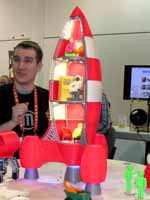 Here’s another very sophisticated model that was manufactured by the Replicator. |
| MakerBot Industries makes the Replicator. They have hundreds of free templates for making all sorts of models. Price is about $1800. O’Reilly Media features the MakerBot in a recent issue of Make Magazine in which it shows you how to make your own MakerBot.
For more information contact MakerBot Industries. |
|
|
|
|
| The AR.Drone 2.0 is another neat gizmo. Designed in France by Parrot, it’s a high tech hovering aircraft. | |
|
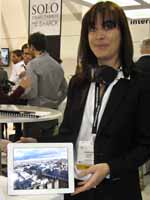 Here, representative Vanessa Loury is showing me a video taken above Paris with the AR.Drone 2.0. The price about $300. |
| To see some of the sample videos and more information, go to ardrone.com. | |
|
|
|
| One of our companies has been involved with flight simulation for many years, so I made it over to Microsoft to see a demo of their soon to be released Flight product. | |
|
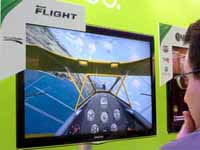 The starter set will be free. Shortly, thereafter Microsoft will release reasonably priced aircraft, scenery and adventures to make Flight even more challenging. |
| Microsoft Flight will be available February 29 at Microsoft Games. | |
|
|
|
| Another phrase that we’ve been hearing a lot about is “the cloud“. Basically, the cloud is a generic name for a secure, remote storage and data backup facility that gives you access to any of the data using various devices (e.g. computer, cell phone, tablet, etc.). | |
| Microsoft’s entry for the cloud is called SkyDrive. Sign up for SkyDrive and you’ll receive FREE, a generous 25GB of storage.
You can backup or store files, documents and photos on SkyDrive. You can choose to share these items with others or keep them private. |
|
| Microsoft Office users can work collaboratively with SkyDrive. OneNote users can access files remotely with various mobile and desktop devices.
One limitation is that any file must be less than 100MB in size which rules out many videos. To sign up for a free SkyDrive account from Microsoft, please go to SkyDrive. |
|
|
As you can tell from both Part 1 and Part 2 of my walk around CES, I enjoyed peeking at a bunch of the new electronic gadgets that are lining up to meet the marketplace. |
|
Written by Arnie Lee
« Older Posts — Newer Posts »
